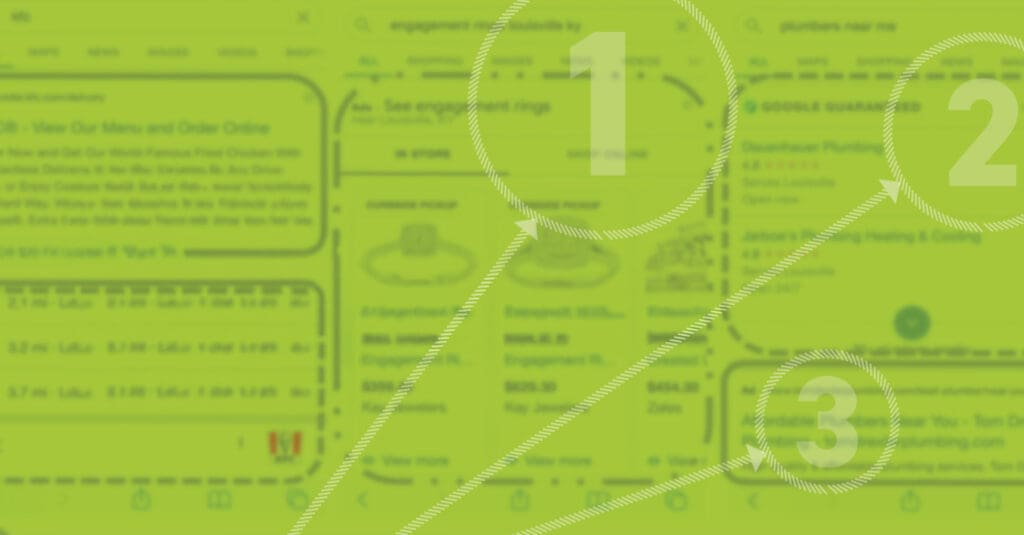
8 Content Marketing Strategy Tips to Get Your Hard Work Found on the SERPs
Businesses today are investing an increasing amount of effort, strategy and creativity in the content they produce for existing customers and prospects.
In this edition of Plain Talk, we will talk about some of the top content marketing strategy tips to consider. We’ll explore how to ensure your content is developed to be discovered by Google and placed prominently on SERPs (search engine results pages). Let’s make sure your hard work is found and appreciated by your target audience.
- Tip #1: Create a Content Marketing Plan
- Tip #2: Create Useful, Meaningful, and Engaging Content
- Tip #3: Focus Your Content on Retention, Value, and Authority
- Tip #4: Incorporate a Table of Contents for Longer-Form Content Pieces
- Tip #5: Answer Questions in Your Content FAST
- Tip #6: Reduce the Size of Your On-Page Hero Images
- Tip #7: Use Structured Content to Improve Content Performance
- Tip #8: Create More Short-Form Videos
- Get Expert Help With More Content Marketing Strategy Tips
Tip #1: Create a Content Marketing Plan
Since we are talking about marketing, of course, we’ll start by quoting Abraham Lincoln. He once said, “Give me six hours to chop down a tree, and I will spend the first four sharpening the ax.” These are still wise words today and the foundation of all other content marketing strategy tips. If you don’t have a plan for your content marketing, chances are you won’t meet your goals. After all, 43% of B2B marketers today have a documented content marketing strategy, and 60% of the most successful B2B marketers have a documented content marketing strategy
Documenting your content marketing plan does a few important things:
- Helps you to identify goals and KPIs—72% of the most successful marketers in North America measure the ROI of their content marketing, according to eMarketer
- Provides you with an understanding of what resources and budget will be required to execute your plan
- Gives you insight into what content topics and formats are needed and where the focus should be placed
- Aligns your goals to a common purpose to drive revenue and guide your prospects through the customer journey—in fact, content marketing generates over 3x as many leads as outbound marketing and costs 62% less, according to Demand Metric
What should you include in your content marketing plan?
Business and marketing needs will be different across different verticals, but there are some must-haves within every content marketing plan that will help you find efficiencies:
- Goals and KPIs
- Target audiences and personas
- Audit of existing content and gap analysis to determine what additional content you need
- Identification of the most important channels for your content
- A clear understanding of content types that you will be developing
- Budget, tools, and resources available to develop your content
- A content calendar to plot the distribution of your content
But before you do anything, grab the grinder, and sharpen your axe. The time you put into planning will save you significant time as you begin to execute and will set you on a path to success and a unified content strategy.
Tip #2: Create Useful, Meaningful, and Engaging Content
Content for content’s sake is a recipe for mediocrity and will not put you above your competitors in ranking or any other meaningful KPI. According to Ahrefs, on average, the top result on Google ranks for almost 1,000 relevant keywords. The content you develop needs to be valuable to your prospects, true to your brand, and possess the authenticity to convert and retain your clientele.
If you’re ever in doubt as to whether you are providing value, go back to your buyer persona. Are you addressing their needs? Is your content compelling and in a format that they prefer? Is your content being made available in the right places? Let your plan guide you, and write your content in a voice that resonates and is shareable.
Regardless of the content you create, you need to put significant effort into developing content that sticks. What does better content mean in 2022? Better content means that you are more effective at answering your visitor’s questions than another piece of content on the same subject. It means that you have taken the extra steps to do the research, cite sources, structure your content, and have left no stone unturned for your user. It can also mean that you are integrating multiple forms of content, such as video, images, whitepapers, or podcasts, to answer a user’s question in a format they prefer. The effort you put in can result in a key evergreen piece that you can build from and enhance for years to come.
Tip #3: Focus Your Content on Retention, Value, and Authority
You have done a lot to get your prospect’s attention. Now keep them by making sure your content delivers on the most common missions. Understand that there are a few things people are looking for when they visit your page, like:
- An answer to a question
- A solution to a problem
- A creditable and knowledgeable source
While the first two may be no-brainers, the third is often overlooked. Don’t make your user go to an author bio or to Google to make sure you’re credible. Many sites include features that allow for hover effects that bring in an author’s credentials, bio, and social handles. Alternatively, you can have this information listed directly on the page immediately.
Tip #4: Incorporate a Table of Contents for Longer-Form Content Pieces
How long does it take a user to get to what they’re looking for in your content? As an experiment, think about how you reached this point in the article. Did you read all the way through (if so, thanks!), or did you click on the table of contents to learn more about why it is important to include a table of contents in your content? If your experience is the latter, you have just demonstrated the importance of a table of contents in an on-page user experience. If you’re a reader who didn’t use the table of contents to get here, you can also find additional benefits in a table of contents from Google SERP, as many of them will get pulled into Google in the form of long-tail keywords.
Tip #5: Answer Questions in Your Content FAST
As we all know, Google is saying that users want quick answers. High-performance content sites often leverage Google knowledge graphs to provide answers to key queries via a dedicated answer area at the top of the page. There’s no thinking about it; there’s no going anywhere else. It’s a done deal – you’ve provided value with one click.
Tip #6: Reduce the Size of Your On-Page Hero Images
Along the lines of time-to-value, we are now seeing a return to smaller images above the fold. While large hero images were once trending because of their ability to grab your attention, they can be an unnecessary barrier between the user and the content they seek and can add to load time. If your website templates allow for smaller images, shift now or consider changing hero formats on your next site redesign.
Tip #7: Use Structured Content to Improve Content Performance
What is structured content?
Structured content is a way of organizing your content so that Google will understand. Essentially, you are creating a predefined framework that will allow your content to be consistent across your site in various formats. As a result, your content becomes more efficient, and its shelf life can be dramatically extended.
Think about your content in chunks (a savvy content marketer will refer to these chunks as fields). Now that you have your chunks, you can edit these bits independently. They live on their own within your content management system and are tagged and labeled appropriately. Fields for a blog may include blog post title, author name, author job title, author organization, blog post description, query answer, statistics, and so on.
As another example, think about the last webinar or video you produced. Now, what if something in that content just changed and needs to be updated? Do you need to rerecord the whole piece, or did you structure your content in a way that will allow you to easily update what is needed? If you leveraged structured content practices, you would be able to update your content quickly and know exactly where to look within the content for what needs to be edited because you’ve built it into a framework.
What are the benefits of structured content?
This exercise can be as easy or as complex as you make it, but the top benefits of structured content are clear:
Efficiencies in content creation: Create once and publish everywhere
Instead of recreating, rewriting, or copying and pasting, content can be developed once and shared across multiple platforms and channels.
Centralized content is easier to maintain
Component Content Management Systems (CCMSs) allow content to be created in a central location by subject matter experts, making it easier to maintain and keep current. Even if you don’t have a CCMS, having a predefined structure to your content can help you update it across your site or other channels more efficiently.
Structured content is adaptive content
Adaptive content is a trend that is here to stay. Adaptive content allows for the personalization of content for the user. When structured appropriately, your website can be optimized to deliver relevant content to a target persona on your site.
Tip #8: Create More Short-Form Videos
What are short-form videos?
According to Google, short-form videos are under 10 minutes, and long-form videos are 10 minutes or longer.
You can use short-form videos to boost your brand in a number of ways, including:
- Increasing “time on site” and user retention,
- Providing users with a way to easily digest your content,
- Boosting brand authority through YouTube and rank on SERP,
- Localizing content within YouTube to rank on local SERP,
- And bolstering SEO through video descriptions and transcripts.
When leveraging a YouTube content strategy, you can build your videos into SERP-dominating content.
Get Expert Help With More Content Marketing Strategy Tips
Your content marketing strategy is one of the critical drivers of your brand. With some time and effort, and by following these content marketing strategy tips, you can inch your way to the top of Google SERPs while providing value to your prospects and clients. If you need a hand analyzing your content efforts or have any questions about best practices, drop us a note or call us at 502-499-4209.
Our Articles Delivered
Signup to receive our latest articles right in your inbox.






